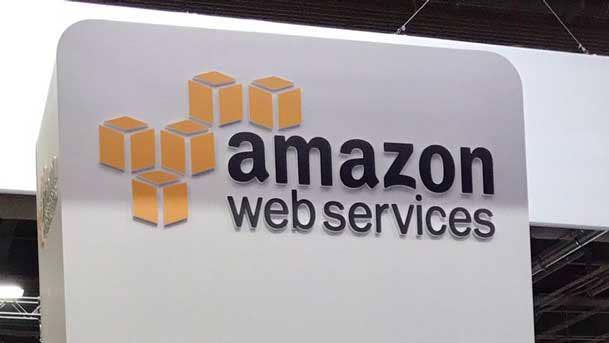10 Future Cloud Computing Trends To Watch In 2021
From serverless, SASE and AI engineering to joint cloud provider offerings, CRN looks at the cloud trends expected to loom large next year.

Cloud computing, which underpinned the world’s economy, global supply chains and remote workforces during the coronavirus pandemic, will continue to be an essential target for organizations looking for increased scalability, business continuity and cost efficiency in 2021.
“The effects of COVID-19 will linger throughout 2021, as businesses will look to lay a foundation for increased agility,” said Dustin Milberg, field chief technology officer for cloud services at InterVision, a Santa Clara, Calif.-based IT service provider and AWS Premier Consulting Partner. “Cloud will take a key focus in this goal, given its benefits of improved accessibility, scalability and flexibility.”
But those companies who view cloud as a journey and not a destination will see more success, according to Milberg.
“This is because simply ‘getting to the cloud’ doesn’t automatically mean you’ll see improved performance and spending,” he said. “Instead, cloud is an iterative process of optimization and creating security by design to match your company’s goals, both now and in the long term.”
Enterprises’ technology needs have increased in complexity over the past year, as workplaces quickly became decentralized during the pandemic, with remote workers across the globe, noted Steve Miller-Jones, vice president of edge strategy and solution architecture at Limelight Networks, a Scottsdale, Ariz.-based content delivery network (CDN) service provider.
“At the same time, exciting new technologies are making it easier to instantly generate, process and analyze data for better business performance,” he said. “These operational demands are shifting how businesses leverage cloud computing.”
Here’s a look at some of the cloud computing trends expected to loom large in 2021.

Global Public Cloud Infrastructure Market Hits $120B
The global public cloud infrastructure market will grow 35 percent to $120 billion in 2021, as the cloud continues to “take center stage” in the recovery from the pandemic, according to Forrester Research.
“The aggressive move to cloud, already proceeding at a healthy clip before the pandemic, will spike in 2021, yielding even greater enterprise adoption, cloud provider revenue and business value,” the Cambridge, Mass.-based market research company said in its “Predictions 2021” report.
Forrester previously forecast the public cloud infrastructure market would increase 28 percent to $113.1 billion next year.
The percentage of worldwide IT spending that’s dedicated to the cloud will continue to accelerate in 2021. Gartner, the Stamford, Conn.-based research and advisory firm, projects that worldwide public cloud spending by end-users will grow 18 percent next year to $304.9 billion, up from $257.5 billion this year.
“The pandemic validated cloud’s value proposition,” Sid Nag, research vice president at Gartner, said in a report this week. “The ability to use on-demand, scalable cloud models to achieve cost efficiency and business continuity is providing the impetus for organizations to rapidly accelerate their digital business transformation plans. The increased use of public cloud services has reinforced cloud adoption to be the ‘new normal’ now more than ever.”
While software as a service (SaaS) still will be the largest market segment for end-user cloud IT spending – it’s expected to grow approximately 16 percent to $117.8 billion -- application infrastructure services (PaaS) is expected to grow at a higher 26.6 percent rate to about $55.5 billion, according to Gartner. The growth in PaaS will be driven by remote workforces’ continued need to access to high-performing and scalable infrastructure via modernized and cloud-native applications, it said.
“The cloud is being used to facilitate much of our remote work environments, so companies will continue to migrate workloads and begin using more PaaS resources to take maximum financial advantage of these somewhat forced changes,” said George Burns III, senior consultant for cloud operations at SPR, a Chicago-based technology modernization firm.
Cloud system infrastructure services (IaaS) spending is projected to increase 26.9 percent to $65.3 billion.

Reshuffling Of The Big Three Cloud Providers
There will be a reshuffling of the top three public cloud providers in 2021, with China’s Alibaba Cloud displacing Google Cloud to take the No. 3 spot for revenue in the global public cloud infrastructure market. behind No.1 Amazon Web Services and Microsoft, according to Forrester.
Alibaba’s cloud computing revenue grew 59 percent year-over-year to $2.19 billion for the quarter that ended Sept. 30, driven by the acceleration in digitalization across industries and businesses of all sizes in China, the company disclosed this month. Revenue from customers in the internet, finance and retail industries were the primary growth drivers.
Google Cloud’s revenue -- which includes sales from Google Cloud Platform (GCP), Google Workspace (formerly G Suite) productivity tools and other enterprise cloud services – increased to $3.44 billion, compared to $2.38 billion in the same quarter last year.
“Google (Cloud) establishes itself as an enterprise-friendly cloud as the work it has put into ERP (enterprise resource planning) workloads, analytics and account management pay off in 2021,” said Hyoun Park, CEO and chief analyst at Amalgam Insights, a technology advisory firm in Berkeley, Calif.
Amalgam expects Google Cloud to achieve healthy 40-plus percent growth next year.
“(Google Cloud CEO) Thomas Kurian has had a strong two-year run so far…in translating Google‘s technology into defined enterprise products, services and relationships,” he said.
Amalgam, which estimates AWS has more revenue than its next three largest competitors combined, expects AWS revenue will grow less than the combination of Google Cloud and Microsoft Azure in 2021.
“This is great news for the business world, as it means that the cloud market is finally a competitive one rather than Amazon vs. the dwarves,” Park said.
AWS will further its progress in providing services for operations management, building on top of communications, messaging, and operations services such as Amazon Chime, Amazon Simple Queue Service, AWS Chatbot and AWS RoboMaker, according to Park said.
“Although AWS provides the technology to scale, the larger Amazon company has a combination of processes, operations and logistics that have led to meteoric growth,” he said. “AWS is in a position to share more of the Amazon core DNA as services and software to further grow the AWS business.”
Microsoft, meanwhile, will exceed $25 billion in Azure cloud revenue in fiscal year 2021 -- driven by secular market demand for cloud and “partner trust that Amazon and Google cannot match” -- and finally break out Azure revenue in its annual reports, Park projected.

Edge Is the New Cloud
Edge is the new cloud, and new edge vendors will trim 5 points from public cloud growth next year, according to Forrester’s predictions.
“In 2021, we will see new business models emerge that facilitate the deployment of edge, efforts by cloud platforms to compete, and AI and 5G facilitating the expansion of edge use cases,” Forrester said.
Large vendors including Dell, HPE, IBM and Intel are doubling down on the edge with cloud-like solutions deployable to anywhere, according to Forrester, and content delivery networks and data center colocation vendors are offering edge compute services across hundreds or thousands of local points of presence.
“Over the next three years, buyers will shift their cloud strategies toward the edge to capture all this innovation and become more connected,” Forrester said. “While public clouds will play a part, we do not think they will dominate, as their culture is based on massive data centers and tight control of the architecture -- the exact opposite of what firms need to serve customers locally.”
While the centralized cloud isn’t going anywhere, developments in serverless computing models and the creation of distributed service layers around the cloud are powering new real-time IT applications, according to Miller-Jones.
“Enterprises are looking to the network edge to bridge the gap between the centralized cloud and end-users, providing low-latency application and content performance for all users, wherever they are working from, Miller-Jones said. “Integrating a distributed edge strategy within a broader cloud computing effort is key to continued innovation in 2021,” he said. “Environments at the network edge that scale when needed, are instantly accessible and that are consumed as a service are key developments in this new paradigm.”
Miller-Jones pointed to two pivotal ways the network edge will transform and expand cloud computing next year.
“By integrating the network edge into their cloud strategy, developers have the ability to easily deploy services at the edge without having to be concerned with the operational overhead of managing more infrastructure,” he said. “With integrated development and deployment pipelines, developers can move application services and functions from the cloud into network edge locations. This will help create more responsive and dynamic applications.”
In 2021, Miller-Jones also expects to see a bigger emphasis on enterprise network edge security and protecting users, services, applications and data, as enterprises embrace distributed application environments.
“Achieving high levels of security throughout the network edge and into the last-mile of distribution is a key challenge for the enterprise and will be enabled by security services at the network edge,” he said.

Artificial Intelligence Engineering
Organizations need a strong artificial intelligence (AI) engineering strategy to ensure their AI projects don’t fail, Gartner said in its “Top Strategic Technology Trends for 2021” report.
“Without AI engineering, most organizations will fail to move AI projects beyond proofs of concept and prototypes to full-scale production,” Gartner said.
AI projects often are not successful because of maintainability, scalability and governance issues, but a strong AI engineering strategy will help the performance, scalability, interpretability and reliability of AI models while delivering the full value of AI investments, according to Gartner.
AI engineering makes AI a part of the mainstream DevOps process rather than a set of specialized and isolated projects.
“AI engineering stands on three core pillars: DataOps, ModelOps and DevOps,” Gartner said. “DevOps deals mainly with high-speed code changes, but AI projects experience dynamic changes in code, models and data, and all must be improved. Organizations must apply DevOps principles across the data pipeline for DataOps and the machine learning (ML) model pipeline for MLOps to reap the benefits of AI engineering.”
In terms of governance and AI engineering, responsible AI is emerging as an umbrella term for certain aspects of AI implementations to deal with AI risk, trust, transparency, ethics, fairness, interpretability, accountability, safety and compliance, according to Gartner.
“Responsible AI signifies the move from declarations and principles to the operationalization of AI accountability at the organizational and societal levels,” it said.

Multi-Cloud And Joint Cloud Provider Offerings
Next year will see the beginnings of multi-cloud and joint provider cloud offerings, as providers realize they can partner to accelerate go-to-market launches, capitalize on mutual strengths and “take on the 800-pound gorilla” that is AWS, according to Park.
“This idea was anathema to cloud providers for most of the 2010s, as the goal of having a cloud platform was theoretically to be the one and only platform that a company uses,” Park said. “However, as multi-cloud environments have started to develop, vendor competition has evolved and massive cloud markets continue to exist, cloud vendors must reconsider how they go to market.”
The Oracle-Microsoft interconnect relationship that started in June of 2019 is an example of a relationship that could be expanded to take advantage of Oracle‘s networking and Microsoft’s ML capabilities, Young said.
Rivals Microsoft and Oracle last year announced they were linking their clouds to allow joint customers to migrate and run their enterprise application workloads across Microsoft Azure and Oracle Cloud. The move was seen as a bid by Redmond, Wash.-based Microsoft -- the No. 2 cloud provider -- and Redwood City, Calif., cloud underdog Oracle to better compete against AWS.

Going Serverless
Serverless is the next evolution from monolithic application architecture after service-oriented architecture and micro-services architectures, said Derek Swanson, chief technology officer of Needham, Mass.-based Silk, whose cloud data platform enables companies to adopt hybrid cloud.
Serverless was among the top five fastest-growing PaaS cloud services for 2020, according to the Flexera 2020 State of the Cloud report.
“Serverless is a true cloud computing paradigm, and it is hard to overstate how much it will impact how much cloud is consumed going forward,” Swanson said. “It is such a compelling model, that applications will be designed and developed going forward to work with serverless, rather than serverless being developed to work with the way we currently develop applications.”
The industry already is on this journey with containers and cloud-hosted common applications as they drive the need for applications to be made up of smaller components that can be given different treatments, including running in different locations, according to Swanson.
Serverless is a boon for developers of all kinds, he said.
“Up until now, having knowledge of AWS, Azure or GCP capabilities was a key requirement of a cloud application developer,” he said. “These resources were in high demand. Going forward, this level of detailed knowledge is mooted by serverless, with the serverless interface in cloud becoming the interface developers interact with, not the lower-level interfaces.”
Automated Cloud Orchestration And Optimization
Cloud platforms will continue to develop automated cloud orchestration and optimization as the complexity of managing both the quantity and quality of interconnected services across applications and services overwhelms even the savviest of IT organizations, according to Park.
“Automated service and performance management must be one of the most important aspects of choosing a cloud provider in 2021, as companies may have to manage a hundred or more services from a single cloud provider,” Park said.
The Growth Of SASE Adoption
While it’s at the peak of Gartner’s “Hype Cycle,” secure access service edge (SASE) will continue to gain adoption as organizations move past the quick response measures they enacted this year for their massive and unexpected increase in remote worker connectivity, according to Derek Brost, director of professional services for security and compliance at InterVision.
Pronounced “sassy” and primarily delivered as a cloud-based service, SASE is a network architecture that combines software-defined WAN capabilities and cloud-native network security services including zero-trust network access, secure web gateways, cloud access security brokers and firewalls as a service.
“Many IT networking groups unfortunately found the strain and limits of their remote access VPN concentrators and, even after overcoming or addressing those breaking points, they next coped with emerging issues in their bandwidth constraints, lack of network segmentation, weakness in endpoint security solutions and myriad untrusted devices connecting to sensitive corporate systems,” Brost said. “Wise IT groups will budget and start planning for a more converged and integrated cloud-based approach to remote device, workforce and distributed security technology.”
‘Perfect Storm’ Of Data Privacy And Cloud Migration
The combination of the coronavirus pandemic and an increase in cloud infrastructure will create the “perfect storm” for data governance and compliance in 2021, according to Balaji Ganesan, co-founder and CEO of Privacera, a data governance and security solution provider, and co-founder of Apache Ranger.
Organizations will continue to initiate projects to ensure secure data migration to the cloud -- i.e. encryption of all data that is required by the enterprise data governance team before their IT or data teams are allowed to move data from on premises to the cloud, Ganesan said.
“In 2021, data governance will become an ever more prevalent topic for CIOs, CISOs, and CDOs to ensure responsible use and availability of cloud data,” he said.
Next year will spell the end of what Ganesan called the “wild west of information sharing.” Regulatory legislation around the world will move toward increased control of personally identifiable information (PII) data to safeguard consumer privacy, as countries increasingly following the lead of the European Union’s General Data Protection Regulation (GDPR).
“The latest politicization of coronavirus data -- combined with the manually and bot-assisted dissemination of information and misinformation based on personal data leveraged out of social media platforms such as Facebook and Twitter --portends the end of the ‘wild west’ of personal information on the internet and will begin a new era of consumer privacy,” Ganesan said.
Standalone data security and governance tools finally will become an integral part of mission-critical business processes, according to Ganesan.
“In 2021, security, privacy and governance will be embedded early in business processes,” he said. “Developers and technical teams will incorporate these requirements early when building new systems. IT teams will invest in tools to provide secure access to data while balancing ease of use and performance. As a result, data security, governance, privacy would become table stakes in all IT strategy.”

Increased Cloud Management And Cost Containment Challenges
For many enterprises, moving workloads to the cloud has greatly improved some operational efficiencies and collaboration, but it has also proven costly.
“We are seeing that customers are much too immature in their skills sets and are using their cloud infrastructure in an inefficient manner compared to how they use their traditional legacy infrastructure,” Swanson said. “In fact, cloud wastage is a problem that hinders cloud adoption. Operational inefficiencies are still too great, and customers are not seeing the cost curves being bent down, but staying at a 1:1 ratio.”
Beyond cloud waste, system platform and management vendors want to be relevant to the rapidly growing cloud computing market, and they understand that managing and operating cloud computing is a new operating paradigm that requires new platforms and tools, according to Swanson.
“While many new companies have sprung up dedicated entirely around cloud cost control, look for these tools to become consolidated and extended natively into production application stacks, as vendors look to make their offerings more appealing through built-in cloud efficiency and cost-management elements,” he said.